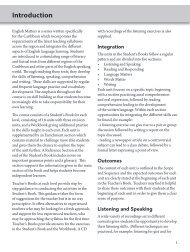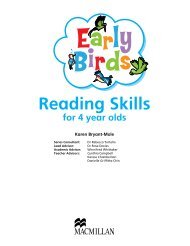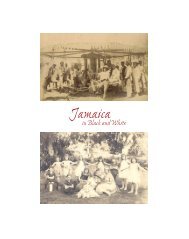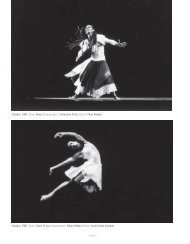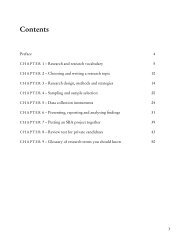Curry, Callaloo & Calypso - Macmillan Caribbean
Curry, Callaloo & Calypso - Macmillan Caribbean
Curry, Callaloo & Calypso - Macmillan Caribbean
Create successful ePaper yourself
Turn your PDF publications into a flip-book with our unique Google optimized e-Paper software.
Introduction<br />
We are a nation in love with our foods and never is the time not right to enjoy a good pot<br />
of pelau, hot doubles, a spicy roti and curry, or a hot shark and bake. The idea for a ‘T & T’<br />
cookbook came to me a few years ago when I realized that globalization and foreign influences<br />
might dilute our local cuisine – or that was my opinion at the time. I envisaged a book that<br />
would showcase all our indigenous foods, by way of old and new recipes, for present and future<br />
generations! When I actually started to collect the recipes I realized that much is still cooking in<br />
our home kitchens, and as a result of globalization we have in fact embraced many more recipes<br />
into our lives. There is even a renewed interest in cooking local sparked by the Internet and<br />
cooking programmes on both cable and local TV.<br />
Growing up in the sixties in the town of San Fernando (it’s now a city), local food was not<br />
celebrated as it is today. Indian and Creole foods were mainly cooked in people’s homes, by<br />
either hired cooks or the head of the household. The only Indian food for sale was found in a<br />
wrap roti from roti shops and doubles at the street corner doubles vendor. Creole foods were<br />
hardly ever served up outside. School lunches brought from home were rarely shared between<br />
friends! Snacks then included pepper mango and chilli bibbi, and the occasional aloo pie from<br />
the school snackette. Eating out was only for special occasions and the choices were slim: Chinese<br />
food at Marsang’s restaurant in San Fernando, where they wokked up some of the tastiest<br />
Cantonese dishes I have ever tasted, and, when we were in Port of Spain, Ling Nam restaurant<br />
on Charlotte Street. Steak dinners were enjoyed at Chaconia Inn or Bel Air Restaurant, Piarco,<br />
and these were just for the grown-ups. Usually, for any celebration, the entertaining was done at<br />
home.<br />
Fast forward to the twenty-first century: industrialization, education, travel, migration to<br />
urban areas, inter-racial marriages and technological advancement have all worked in favour of<br />
knocking down racial divides and bringing together our ethnicities. This unity of our races is no<br />
more apparent than in our cuisine. Today, the foods reflecting the rich culinary heritage of our<br />
forefathers are enjoyed by everyone, so much so that our cuisine has transcended itself, marking<br />
out a permanent place on our cultural landscape and on the world culinary map. Our 50:40:10<br />
per cent ethnic make-up of African:Indian:European and Chinese respectively is shown in a<br />
cuisine that is bold, explosive in flavour, eclectic and addictive.<br />
Opposite: Nariva Swamp meets the sea. Above: Port of Spain<br />
9780230038578.indd 7 25/07/2011 13:08<br />
7



